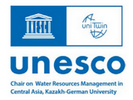



Year: 2017
Collections: Scientific Publications
Topics: Water, Climate
Authors: Kalashnikova O. Ju., Abdibachaev U. A., Moldobekov B. D.
Countries: Kyrgyzstan
Year: 2020
Collections: Research Paper
Topics: IWRM
Authors: Гафуров А. А., Kalashnikova O. Ju., Niyazov J.B.
Countries: Kazakhstan, Kyrgyzstan, Uzbekistan, Tajikistan, Turkmenistan
Year: 2023
Collections: Research Paper
Topics: Water
Authors: Makhmudova L., Mussina A., Ospanova M., Zharylkassyn A., Kanatuly A.
Countries: Kazakhstan
Source: Central Asian Journal of Water Research
The research aimed to assess the impact of human economic activities on the Yesil River Basin based on the observational data contained in Kazhydromet’s (Republic State Enterprise, RSE) hydrometeorological periodicals of 1933-2019. The additional analysis of numerous sources – statistics digests, online data of the Bureau of National Statistics under the Agency for Strategic Planning and Reforms of the Republic of Kazakhstan (RK), monographs and scientific papers also allowed to reliably evaluate the overall water consumption in the country.
Year: 2023
Collections: Scientific Publications
Topics: Water
Authors: Karatayev M.
Countries: Kazakhstan
Source: Central Asian Journal of Sustainability and Climate Research
In transitional countries with arid climates, water stress is rising as the demand for water rises with population, economic growth, and intensive development of agriculture and energy and change in climate environment. In this regard, transitional nations plan in national programmes and policies alternative energy sources, sustainable food development, and circular water resource usage. However, these nations frequently approach current water, energy, and food planning without taking interactions of these resources and their impact on each other into account. This paper intends to demonstrate the significance of the water, energy, and food nexus approach for Central Asian countries in transition.
Year: 2022
Collections: Policy Briefs
Topics: Agriculture, Sustainable Development
Authors: Guggenberger Georg, Shibistova Olga, Liebelt Peter, Muminjanov Hafiz, Kassam Amir, Friedrich Theodor
Countries: Kazakhstan, Kyrgyzstan, Uzbekistan, Tajikistan, Turkmenistan, Afghanistan
Source:
Soil degradation is widespread and cross-border in Central Asia with multiple symptoms. This impairs the provision of ecosystem services, including food production, climate change mitigation, biodiversity, and human health. The soil health concept links soil management to broader sustainable development goals. Soil knowledge and its application has to be invigorated, for instance by establishing a Central Asian Soil Competence Network.
Year: 2025
Collections: Scientific Publications
Topics: Water, IWRM
Authors: Gafurov A., Ziganshina Dinara, Assubayeva A., Nodir Djanibekov, Abdullaev Iskandar, Bobojonov Ihtiyor, Dombrowsky Ines, Hamidov Ahmad, Herrfahrdt-Pähle Elke, Janusz-Pawletta Barbara, Ishangulyyev Rovshen, Kasymov Ulan, Mirkasimov Bakhrom, Petrick Martin, Strobehn Katrin
Countries: Kazakhstan, Kyrgyzstan, Uzbekistan, Tajikistan, Turkmenistan
Source: water-ca.org
Political tensions over water management in the Central Asia region have intensified since the Soviet era, as ecological issues like the drying Aral Sea and seasonal hydropower disruptions impact downstream countries. The paper discusses the region’s water governance challenges, including climate-induced uncertainties, water resource demands, and the limited capacity of local research institutions. While Central Asia’s governments have initiated reforms, including new infrastructure and agreements, resilience in water management remains underdeveloped. The paper also explores the role of higher education institutions in fostering capacity-building for sustainable governance, emphasizing the need for local expertise and regional collaboration. The proposed establishment of a Central Asian water research platform aims to enhance science-policy integration, promote sustainable water governance, and support informed regional cooperation on transboundary water issues.
Year: 2016
Collections: Scientific Publications
Topics: Water, Climate, Sustainable Development
Authors: Kayumov Abdurasul
Countries: Kazakhstan, Kyrgyzstan, Uzbekistan, Tajikistan
Year: 2022
Collections: Scientific Publications
Topics: Water, Irrigation, IWRM
Authors: Conrad Christopher, Usman Muhammad, Kenjabaev Shavkat, Ziganshina Dinara, Kussainova Maira, Nikolayenko Alexandr
Countries: Kazakhstan, Kyrgyzstan, Uzbekistan, Tajikistan, Turkmenistan, Afghanistan
Source:
Management interventions to increase water use efficiency in the irrigation sector of Central Asia were introduced but a scientific control instrument is still missing - The online tool WUEMoCA provides relevant irrigation performance indicators in the Aral Sea Basin from satellite data in combination with additional sources - WUEMoCA-based analysis of water security and water use efficiency showed: o 11 out of 33 provinces in the Aral Sea Basin were below the critical level to supply crop water demands for more than 5 years in 2000-2018. o Irrigation water use efficiency is very low in general (55%-60%) and scientific data hints at missing or failing water management interventions in the Amu Darya and Zarafshan basins. - WUEMoCA can strategically supplement the ongoing digitization efforts of the countries in the water sector. - By utilizing WUEMoCA-like tools, Central Asian governments and water management bodies will have new platforms for steering and assessing current and future strategic interventions in regional water management.
Year: 2017
Collections: Scientific Publications
Topics: Water, Climate
Authors: Sagintayev J.M., Kerimkulov Zhandos
Countries: Kazakhstan, Kyrgyzstan, Uzbekistan, Tajikistan, Turkmenistan
Year: 2022
Collections: Scientific Publications
Topics: Climate
Authors: Khaibullina Zh., Amantaikyzy A., Ariphanova D., Temirbayeva R., Mitusov A., Zhurumbetova Zh.
Countries: Kazakhstan
Source:
Year: 2020
Collections: Research Paper
Topics: Water
Authors: Khaydarov A. R.
Countries: Uzbekistan
For questions about cooperation, please contact us at: